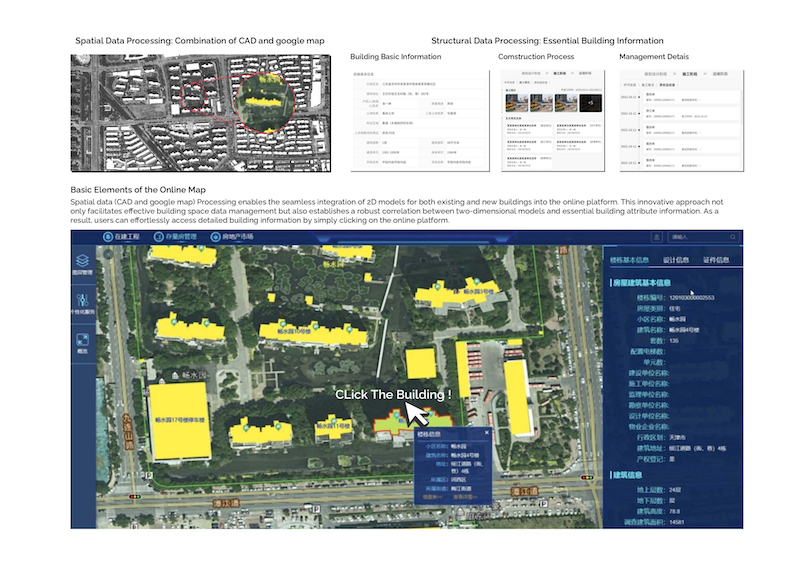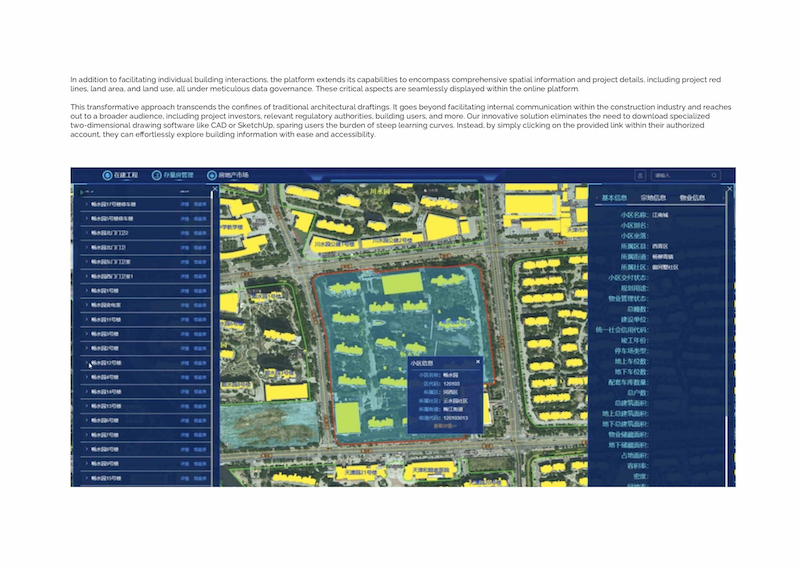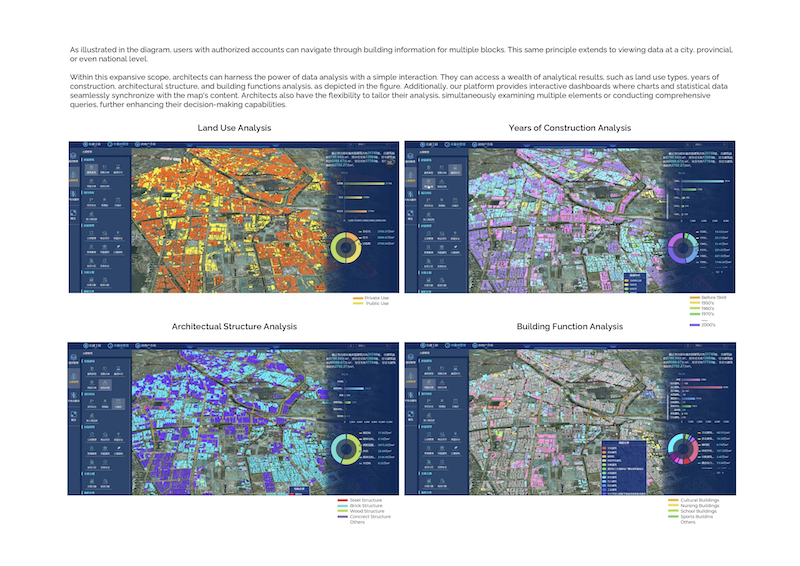PRO-GEO BUILDING INTELLIGENCE PLATFORM
DIGITAL TWIN FOR CITY OPERATIONS AND BUILDING MANAGEMENT
Jiangsu, China
MAr 2023 – Mar 2024
Work As Project Manager
Selected Interface With Untrue Data





The digital twin platforms has revolutionized the management of housing resources by enabling the integration of disparate data sources and facilitating real-time monitoring and analysis. This to-G software development project delves into the implementation of a digital twin platform spanning urban and rural areas across 13 cities within a province. The project explores the processes involved in data processing, platform application, and data analysis, and elucidates the transformative potential of digital twin platforms in optimizing housing space utilization and mitigating safety risks.
- To-G platform with digital twin models ranging from province, to cities, and to 34 millions buildings
- Processing of multiple data types for existing houses and dynamically updating data for new construction and buildings in the future
- Multiple Applications of various simulation and data analysis models for housing safety management and city management
Data Processing
The Digital Twin Platform aggregates data from 34 million urban and rural houses, sourced from various governmental levels, ensuring accuracy and uniformity. However, due to disparate sources and formats, a robust data governance framework becomes imperative. Pre-existing data, collected prior to 2021, is integrated with real-time updates from the new housing approval system, forming a dynamically updated province-wide housing construction data resource.
Platform Application
The platform serves as a repository for housing construction data, enabling unified management of provincial housing space resources. Leveraging this dataset, the platform fosters the creation of theme application scenarios based on temporal and spatial dimensions. Additionally, it facilitates specialized safety supervision and hazard analysis applications, thus visually expressing space resources. Further, the platform extends support to provincial and municipal endeavors while catering to local personalized needs through base map services.
Data Sources and Analysis Processing
Interdepartmental collaboration enables the acquisition of data pertinent to housing usage, including seismic activity, weather conditions, building attributes, and fire safety measures. Partnerships with academic institutions aid in developing computationally predictive safety models. Moreover, IoT installations in key structures facilitate real-time monitoring, ensuring proactive management. Early warning information is disseminated through government channels to support localized governance.





